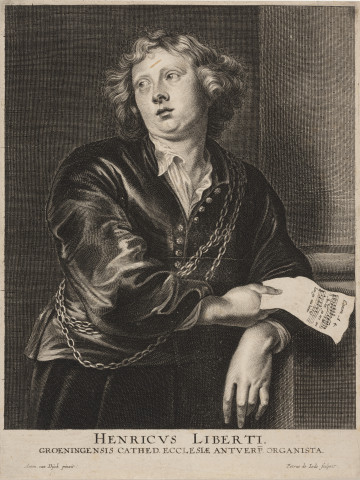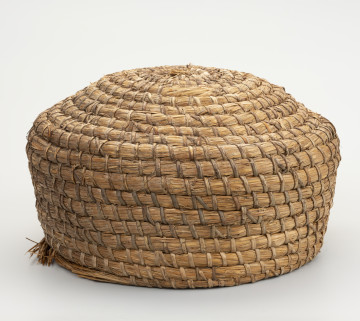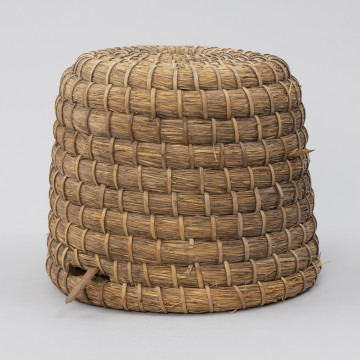
Portrait
circa 1632
National Museum in Szczecin
Part of the collection: European classics of modernity
Hermann Knopf studied between 1887 and 1991, initially at Vienna Academy of Fine Arts under the supervision of Julius Victor Berger and subsequently in the studio of Alexander von Lietzen-Meyer at the Royal Bavarian Academy of Fine Arts in Munich. Between 1896 and 1897, he resided in Paris. After returning from France, he settled for good in Munich. Knopf actively participated in the local artistic life, regularly presenting his works in the Crystal Palace at the annual exhibitions of the Munich Art Association. Knopf’s works form a part of painting traditions of the second half of the 19th century. Knopf is the author of narrative compositions with historical themes and numerous anecdotal genre scenes, such as “Leisurely Evening” (in the collection of Neue Pinakothek, Munich), “Travel Toy” (in the collection of Westfalisches Landesmuseum für Kunst und Kulturgeschichte, Münster). He was interested in the issues of light and mutual relations between colour and light. These interests are also clearly legible in the artwork “Peasant Family At The Table” forming a part of the collection of the National Museum in Szczecin. The painting presents a genre scene in interior. A modest peasant family was shown around a simple table covered with a white cloth. There are some plain ceramic vessels on the table and a piece of bread. A young woman in the foreground, sitting on a woven seat, is holding and feeding an infant; a crib is standing next to her. A young man wearing a red shirt and a dark cloak, holding a pipe in his hand, is sitting at the table and tenderly looking at the child. The story about the daily life painted by Hermann Knopf evokes associations with the early works of Wilhelm Leibl or Karl Schuh. The aforementioned artists are united both by the tradition of a reliable painting technique, as well as formal searches of modern forms of painting expression.
Dariusz Kacprzak
Hermann Knopf studied between 1887 and 1991, initially at Vienna Academy of Fine Arts under the supervision of Julius Victor Berger and subsequently in the studio of Alexander von Lietzen-Meyer at the Royal Bavarian Academy of Fine Arts in Munich. Between 1896 and 1897, he resided in Paris. After returning from France, he settled for good in Munich. Knopf actively participated in the local artistic life, regularly presenting his works in the Crystal Palace at the annual exhibitions of the Munich Art Association. Knopf’s works form a part of painting traditions of the second half of the 19th century. Knopf is the author of narrative compositions with historical themes and numerous anecdotal genre scenes, such as “Leisurely Evening” (in the collection of Neue Pinakothek, Munich), “Travel Toy” (in the collection of Westfalisches Landesmuseum für Kunst und Kulturgeschichte, Münster). He was interested in the issues of light and mutual relations between colour and light. These interests are also clearly legible in the artwork “Peasant Family At The Table” forming a part of the collection of the National Museum in Szczecin. The painting presents a genre scene in interior. A modest peasant family was shown around a simple table covered with a white cloth. There are some plain ceramic vessels on the table and a piece of bread. A young woman in the foreground, sitting on a woven seat, is holding and feeding an infant; a crib is standing next to her. A young man wearing a red shirt and a dark cloak, holding a pipe in his hand, is sitting at the table and tenderly looking at the child. The story about the daily life painted by Hermann Knopf evokes associations with the early works of Wilhelm Leibl or Karl Schuh. The aforementioned artists are united both by the tradition of a reliable painting technique, as well as formal searches of modern forms of painting expression.
Dariusz Kacprzak
Author / creator
Dimensions
cały obiekt: height: 98 cm, width: 114 cm
Object type
painting
Creation time / dating
Creation / finding place
Identification number
Location / status

circa 1632
National Museum in Szczecin

1965
National Museum in Szczecin

1890 — 1910
National Museum in Szczecin
DISCOVER this TOPIC
Castle Museum in Łańcut
DISCOVER this PATH
Educational path